Advancing scientific research for half a century
The Cecil H. and Ida Green Center for Reproductive Biology Sciences celebrates a growing list of achievements
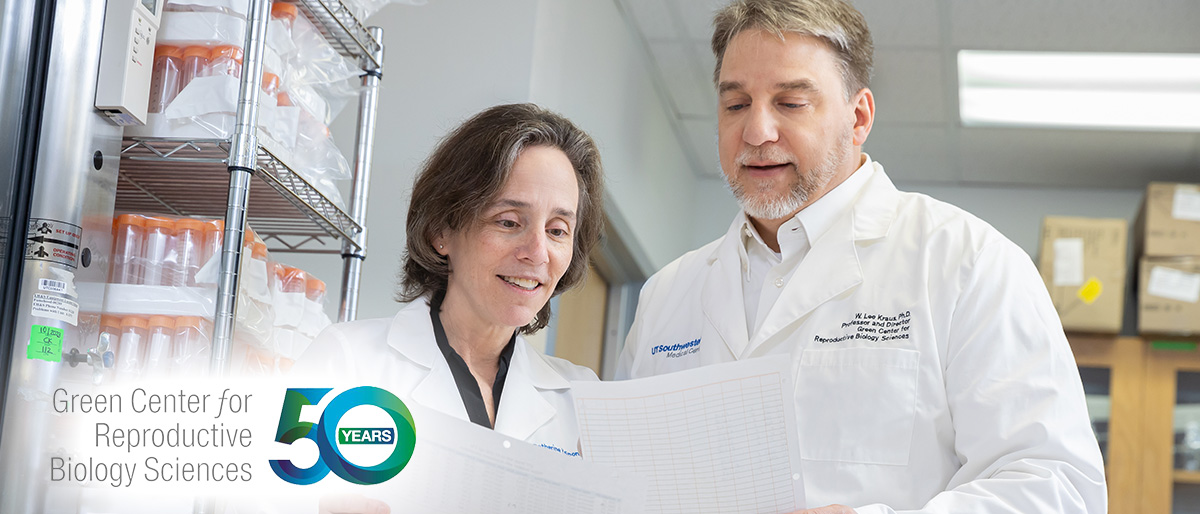
In 1974, the Cecil H. and Ida Green Center for Reproductive Biology Sciences opened at UT Southwestern with the goal of promoting innovative and collaborative basic and translational research to improve women’s health.
The five decades that followed have been marked by recognition, reinvention, and growth.
Initially, the focus was on problems affecting women’s reproductive health and included female biology, infant development, and labor and birth. But over the years, the Center broadened its investigations to gene regulation, genomics, and male reproductive physiology.
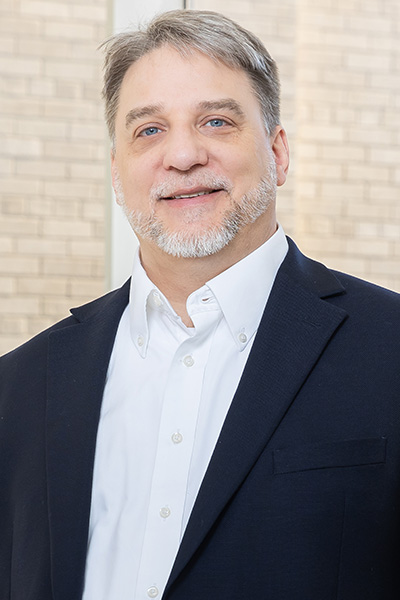
Today, under the leadership of Director W. Lee Kraus, Ph.D., the Green Center has established an international reputation and expertise in broadly defined reproductive biology and affirmed its commitment to fundamental questions related to reproduction and gene regulation.
The credit goes to the faculty, postdocs, graduate students, clinical fellows, and technical staff who have worked in the Green Center and their commitment to excellence, scientific discovery, and service to the community, said Dr. Kraus, also Professor of Obstetrics and Gynecology, and Pharmacology.
“The fact that the Center could exist for 50 years and have a major impact at every stage of its evolution highlights the kind of institution that UT Southwestern is,” he said.
What started as a small group of dedicated individuals has since grown to 84 basic researchers, clinician scientists, trainees, and staff, with 10 core faculty members working under the leadership of Dr. Kraus, who was appointed Director of the Green Center in 2010. These carefully chosen individuals – whose work links gene regulation to reproduction and related areas of biology – have reinvigorated the Center and created a focal point for like-minded researchers across campus, Dr. Kraus said.
“They have driven the advancement of science on campus and had an impact beyond UT Southwestern,” he said. “Our efforts have changed the way science is done.”
The beginning
In the early 1970s, Paul C. MacDonald Jr., M.D., who was then the new Chair of the Department of Obstetrics and Gynecology, had a vision for reducing the rate of adverse pregnancy outcomes, improving health care for women, and providing access to family planning services.
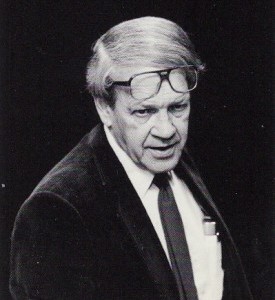
Dr. MacDonald was ahead of his time in many ways. He not only wanted to improve women’s health, he also wanted to establish a transdisciplinary team of basic scientists and clinicians.
In 1974, Dr. MacDonald and then-President Charles C. Sprague, M.D., took a proposal to philanthropists Cecil H. and Ida Green to establish the Center named in their honor. The Greens agreed, and over the next four years the couple continued to support training for students and faculty members at the Center by adding to their initial endowment for reproductive biology sciences.
As the newly appointed Director of the Green Center, Dr. MacDonald was committed to investigating some of the most complex health issues affecting women at all stages of life – from birth, through puberty and the reproductive years, to menopause and aging. He sought answers to many questions, such as why women deliver prematurely and whether treating postmenopausal women with estrogen increases their risk of endometrial cancer.
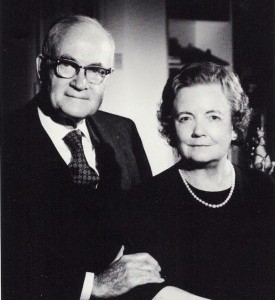
But Dr. MacDonald’s interests did not end there. He provided an environment for education and career development and worked tirelessly to encourage bench-to-bedside translational research.
In 1977, when the Green Center moved to its first permanent home in the new Harry S. Moss Clinical Science Building, Dr. MacDonald said that the Green Center’s interdisciplinary approach to research was the wave of the future. He believed that biomedical research had become so complex that it required diverse teams of experts, freely communicating, to solve the problems faced in the laboratory.
A new direction
When David L. Garbers, Ph.D., became Center Director in 1999, he was already well known for his research in reproductive biology. A Professor of Pharmacology at UT Southwestern, he played a pioneering role in research on sperm-egg communication. As Director, he expanded the scope of research at the Center and shifted its oversight to the Department of Pharmacology.
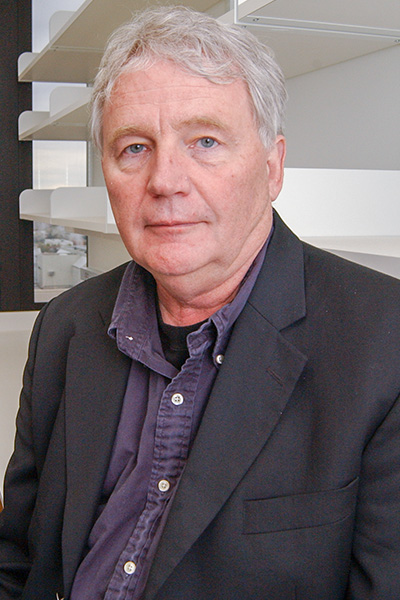
Dr. Garbers, who served as Director until 2006, addressed key technological and basic research questions proposed by an advancing science, said David J. Mangelsdorf, Ph.D., Professor and Chair of Pharmacology and Professor of Biochemistry.
“Dr. Garbers was viewed as a pillar of the Green Center, both as a scientist and a mentor,” said Dr. Mangelsdorf, who served as interim Director from 2006 to 2010. “Few could match his unpretentious style, wisdom, and knack for taking a research project in the right direction.”
His groundbreaking research characterizing biochemical steps governing sperm-egg interaction and fertilization furthered the reputation of UT Southwestern, Dr. Mangelsdorf said.
Full circle
In 2006, when considering new directions for the Center, Alfred G. Gilman, M.D., Ph.D., then the Dean of UT Southwestern Medical School, proposed moving the Green Center back to the Department of Obstetrics and Gynecology. In 2010, he hired Dr. Kraus as the Center’s third Director, intending to take a broader view of reproductive biology and advance the reputation of the Green Center.
“We put our unique spin on the discipline,” Dr. Kraus said. “Reproductive biology is really all biology, and we are showing how the process of gene regulation can control all aspects of it.”
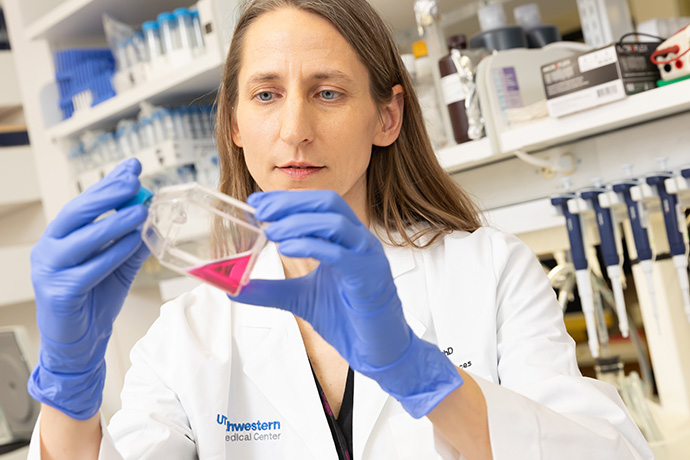
Dr. Kraus continues to emphasize the fundamentals, including the molecular underpinnings of gametogenesis, fertilization, stem cells, development, and birth, said Laura Banaszynski, Ph.D., Associate Professor in the Green Center, Children's Medical Center Research Institute at UT Southwestern, and Obstetrics and Gynecology.
He has taken the Center back to its roots by focusing on basic research while using the most advanced technology, Dr. Banaszynski said. “That led to an understanding of the molecular mechanisms driving biological processes in a way that was not possible before,” she said.
Dr. Kraus’ interest in bringing talented people to the Center drives its success, Dr. Mangelsdorf said.
“Dr. Kraus has recruited outstanding faculty and transformed the Center into something that goes beyond human health to basic science,” he said.
Collaboration drives success
In 2019, the Center became autonomous, but continues to work closely with the Department of Obstetrics and Gynecology, hosting many of its clinical fellows for laboratory rotations and collaborating with its clinicians on translational research projects.
“The relationship has been a great fit,” said Catherine Y. Spong, M.D., Professor and Chair of Obstetrics and Gynecology. “Our goals are aligned, and we are eager to continue building on the opportunities to enhance research that ultimately impacts human health.”
The collaborations between basic scientists and clinicians have played a big part in the Center’s success. These partnerships have led to many advances, from a better understanding of cancer in women to the development of new drugs, Dr. Spong said.
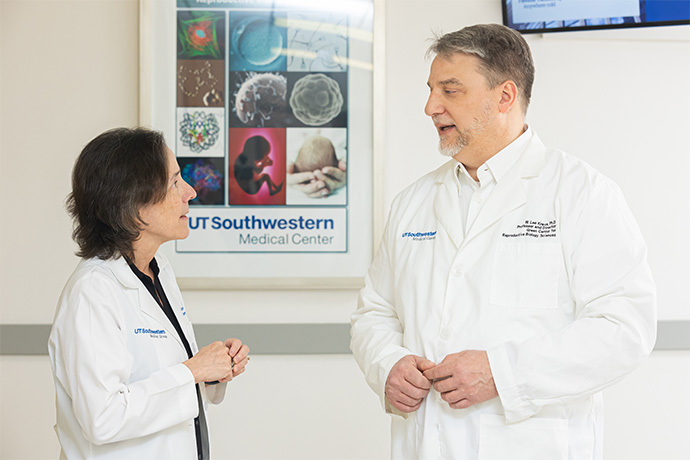
“The Green Center has done a wonderful job of providing opportunities for fellows in obstetrics and gynecology who want to do more training in research,” said Mala Mahendroo, Ph.D., a Professor of Obstetrics and Gynecology in the Green Center.
Basic research in reproductive biology benefits everyone, Dr. Banaszynski added. Understanding how eggs mature is just one example of the type of investigation currently underway that has a significant impact on patients and families, she said.
“It affects half the population and their partners,” Dr. Banaszynski said. “Having a better understanding of reproduction affects everyone who wants to have a child.”
Today, the Green Center is committed to conducting leading-edge research on gene regulation while integrating basic, translational, and clinical research in reproduction and related areas of biology, including stem cells, immunology, and metabolism.
“I think Dr. MacDonald would be pleased about what the Center has become,” Dr. Kraus said. “Initially, Ida Green wanted to support research in women’s reproductive health. Fifty years later, we have come full circle but with different tools and a modern approach.”

